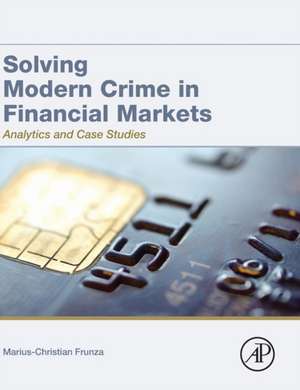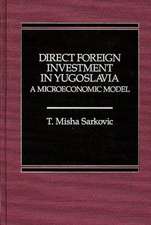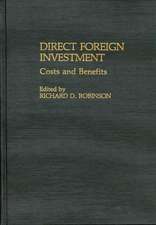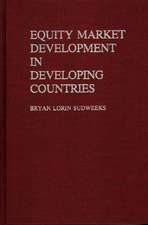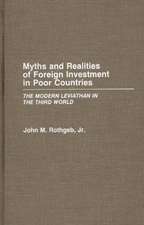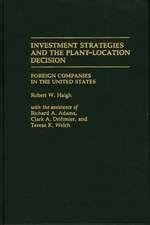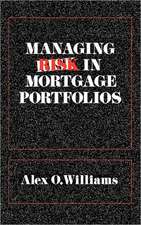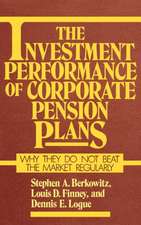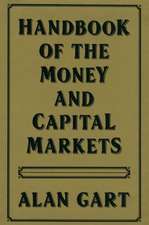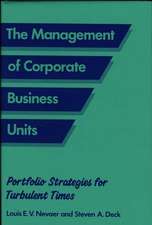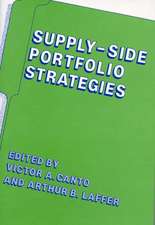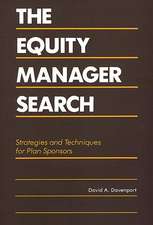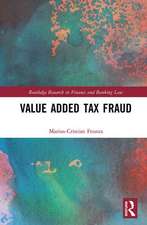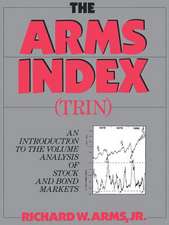Solving Modern Crime in Financial Markets: Analytics and Case Studies
Autor Marius-Cristian Frunzaen Limba Engleză Hardback – 30 noi 2015
- Interviews and case studies provide context and depth to examples
- Case studies use R, the powerful statistical freeware tool
- Useful in classroom and professional contexts
Preț: 519.95 lei
Preț vechi: 571.38 lei
-9% Nou
Puncte Express: 780
Preț estimativ în valută:
99.52€ • 108.14$ • 83.65£
99.52€ • 108.14$ • 83.65£
Carte tipărită la comandă
Livrare economică 14-28 aprilie
Preluare comenzi: 021 569.72.76
Specificații
ISBN-13: 9780128044940
ISBN-10: 0128044942
Pagini: 526
Dimensiuni: 191 x 235 x 30 mm
Greutate: 1.27 kg
Editura: ELSEVIER SCIENCE
ISBN-10: 0128044942
Pagini: 526
Dimensiuni: 191 x 235 x 30 mm
Greutate: 1.27 kg
Editura: ELSEVIER SCIENCE
Public țintă
Upper-division undergraduates, graduate students, and professionals in finance, accounting, and law who are working with forensic data and analytics to solve financial crimesCuprins
1. Modern Financial Crime
- Innovation and Crime
- High Frequency Trading
- Commodities Markets
- Social Networks and Financial Crime
- Cryptocurrencies: a New Monetary Vehicle
- Assessment of the Link between the Betting Industry and Financial Crime
- Truth: a Game of Probabilities
- Statistical Distributions
- Forecasting Distributions
- Genetic Algorithms
- Statistical Hypothesis Tests
- Non-parametric Techniques
- Fuzzy Methods
- Clustering Techniques
- Support Vector Machine
- Assessing the Accuracy of a Fraud Detection Mode
- Benford's Law
- Structural Changes in Time Series
- Exploring Unstructured Data
- Reading the Balance Sheet of Financial Firms
- Fraud on the Market Theory
- Efficient Market Hypothesis Testing
- Market Prices and Trading Activity
- Order Book analysis
- Event Study
- LIBOR Manipulation
- EURIBOR Manipulation
- The Madoff Case
- Enron - Worldcom
- Rating Agencies and Crises
- The FX Fixing Fix
- The Case of Greenhouse Gas Emissions Allowances Market
- Stronger Financial Regulation Pros and Cons?
- Efficient Frameworks for Financial Crime Surveillance
- Joint Structures for Tackling Financial Offense: Criminal Investigators and Market Regulators
Recenzii
""Frunza does an excellent job of presenting theoretical, applied and case study discussions. Detailed and technical concepts are explained in a clear manner. The book is very timely especially with respect to the sports betting market and cryptocurrencies and FX manipulation." --Bonnie Buchanan, Albers School of Business, Seattle University
"This text tackles head on how crimes committed within financial markets have a reputation for being complex and sophisticated and where ‘crime scenes’ are widely regarded as helping to conceal these already secretive activities. In focusing ‘only’ on financial crimes committed in financial markets the author has given himself a monumental task. The inherent ambition of this task is also readily apparent from his willingness to address the challenges of understanding financial crimes through the technicalities behind their commission. This makes this potentially a contribution of high importance. Many will agree with the author’s premise on the essence of innovation in paradigms of surveillance and discovery and then response, and this text recognises the practical technical challenges entailed in understanding how these activities are actually committed. This text provides an important link for making value judgements on propriety, and thus qualitative and normative judgements on whether they are properly regarded as crimes and enforced as such, a pre-requisite for which is understanding how they are actually committed and where they can be found. Focusing on the technicalities of financial crimes in such a comprehensive way makes this text distinctive. In doing so it not only provides an extremely helpful guide for those who are concerned about financial crime, and concerned to ensure they understand it, but actually in doing so it highlights the sheer enormity of this task." --Sarah Wilson, York Law School, University of York
"This text tackles head on how crimes committed within financial markets have a reputation for being complex and sophisticated and where ‘crime scenes’ are widely regarded as helping to conceal these already secretive activities. In focusing ‘only’ on financial crimes committed in financial markets the author has given himself a monumental task. The inherent ambition of this task is also readily apparent from his willingness to address the challenges of understanding financial crimes through the technicalities behind their commission. This makes this potentially a contribution of high importance. Many will agree with the author’s premise on the essence of innovation in paradigms of surveillance and discovery and then response, and this text recognises the practical technical challenges entailed in understanding how these activities are actually committed. This text provides an important link for making value judgements on propriety, and thus qualitative and normative judgements on whether they are properly regarded as crimes and enforced as such, a pre-requisite for which is understanding how they are actually committed and where they can be found. Focusing on the technicalities of financial crimes in such a comprehensive way makes this text distinctive. In doing so it not only provides an extremely helpful guide for those who are concerned about financial crime, and concerned to ensure they understand it, but actually in doing so it highlights the sheer enormity of this task." --Sarah Wilson, York Law School, University of York
